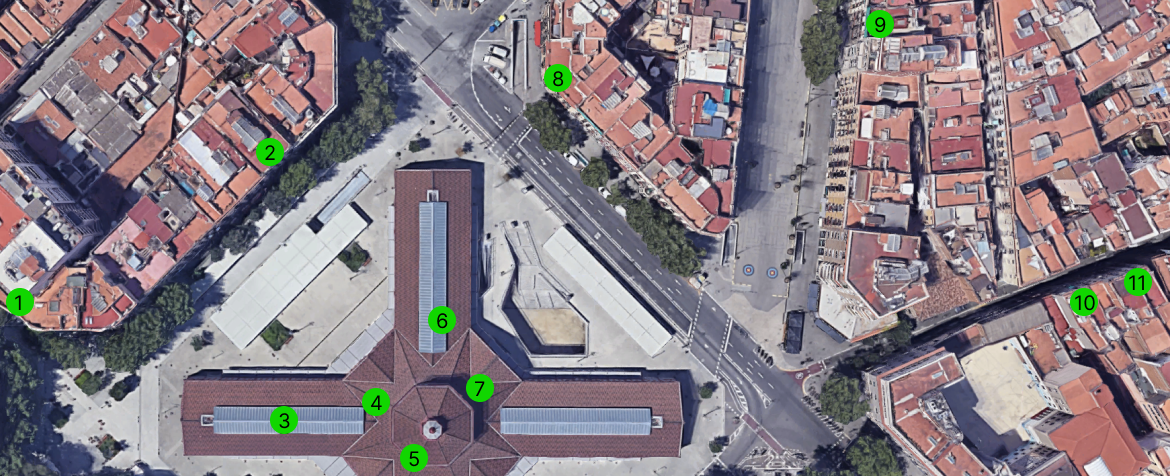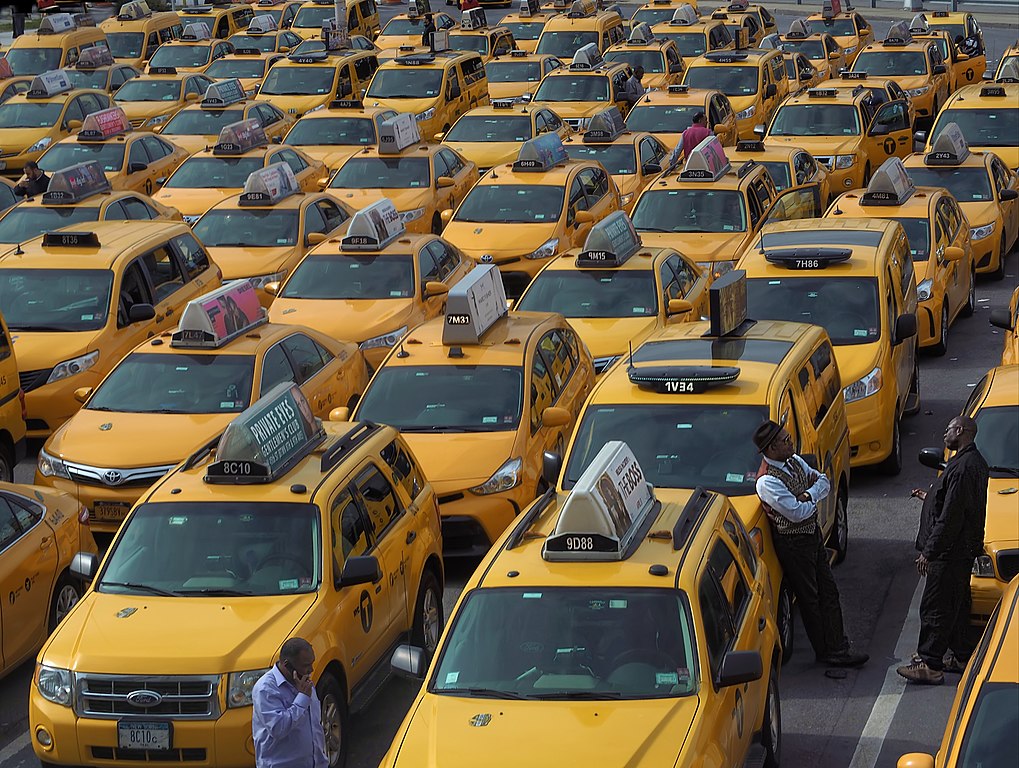Capitalism is an economic system where the economic output of society is produced in privately owned businesses and sold on a market.
Capitalism leads to many social, ecological and democratic issues, but I will not discuss that here. Instead, this essay aims to expose the fundamental economic inefficiencies of a capitalist economic system.
An economy produces economic output. The economic output includes goods, services and information. This is the singular purpose of an economy. Creating jobs is not the purpose of an economy. However, labor is necessary (for now) for an economy to produce output.
Measuring how well an economy serves a society is not straightforward. More economic output is better, but there are many types of output and they have different importance. An economy requiring less work, or generating less pollution is also better but all of these issues all have to be considered with different weights based on the values of a society to determine how to judge an economic system. We can hardly compare the utilities of two economies, but it is still useful to consider the utility of an economy and, regardless of our values, it is possible to tell when an economy is not Pareto optimal.
A capitalist economy is run to maximize the profit of each individual business. This is not the same as maximizing the utility of the economy. This is the fundamental problem with capitalism.
There is thus ample room for improvement in a capitalist economy and the most glaring shortcomings are handled by laws and regulations and often large parts of the economy are put under a different economic system such as public healthcare and schools.
However, this misalignment of goals—maximizing local profits versus maximizing global utility—is fundamental to capitalism. In this essay, I discuss how this misalignment leads to economic inefficiencies by highlighting four concrete phenomena of capitalist economies.
Consider an idealized situation of two identical ice cream vendors on a 1 km beach and a bunch of beachgoers evenly spread along it. When hungry, each beachgoer will walk to the nearest ice cream stand. Where should the ice cream vendors place themselves? Placing each vendor 250 m from either side of the beach minimizes the average walking distances. Each customer makes a 250 m trip from their towel to the ice cream stand and back, on average. Both vendors get the same amount of customers. This is the ice cream stand placement that maximizes utility.
However, each vendor tries to maximize their individual profits under capitalism. Consider the placement above. What happens if one vendor decides to move their stand to just outside of the other vendor, so we have a stand 250 m from one side of the beach, and one stand 260 m from the same side of the beach? The vendor that moved gets almost 3/4 of all the customers, while the vendor that did not move only receives 1/4 of all customers.
The utility-optimal placement is thus not seen under capitalism as either vendor can improve their profits by moving. The only placement where neither vendor can improve their profits is when both vendors place their stands right next to each other at the center of the beach, this is the Nash equilibrium. Both vendors still get half of the customers each at this placement, but ice cream shoppers now need to walk twice as far on average.
The same phenomenon shows up when consumers choose products based on other factors than placement along a beach. Manufacturers selling products on the same market should design them as similar as possible to maximize profits, similar stores should place themselves in the same part of town, competing restaurants should have as similar menus as possible. The effect can be seen in the menus of McDonalds and Burger King, the inventory of convenience stores, the designs of smartphones and cars from different vendors, the locations of pharmacies and gas stations. While having more than two actors alleviates the situation in the example of the one-dimensional beach, this may only encourage businesses to differentiate in a few out of the many dimensions of differentiation that can benefit consumers.
This principle of minimum differentiation is referred to as Hotelling's law after Harold Hotelling. It leads businesses of capitalist economies to make their products more similar than what would benefit consumers most. A different economic system can place stores to maximize accessibility, design products differently to allow heterogeneous consumers to pick products that are better suited to their needs. A capitalist economy leads to less diversity than an economy maximizing utility.
Some products have a negligible distribution cost, but considerable costs in production. Examples are software, music, books, movies and news. The price for society to produce these products is the same regardless of how they are distributed. The products have a certain value to each consumer, and the total value to society is the sum of the value received by each consumer that gets access to them. Utility is thus maximized by producing these products if the total value to society surpasses production cost, and then distributing these as widely as possible.
However, distribution of these products is necessarily limited under capitalism. Businesses need to put a price on distribution in order to finance production. The price is set to maximize profits, it is thus decided by price elasticity alone. All consumers that see value in these products, but a value that is smaller than their price, miss out.
This principle applies also to products that have non-zero but small distribution costs compared to their fixed costs. Public toilets, roads and public transport are examples that provide more utility the more people use them, but it is necessary to limit their use with a price under capitalism.
The untapped potential in customers that value products less than their price compels companies to sell at different prices to different consumers. Profit, and utility, is maximized if the price is set to just below the value each consumer sees in the product. This can be done in different ways, e.g. with student discounts or complicated discount systems that only financially weaker consumers consider worthwhile investigating. It can also be done by pricing tickets differently depending on when and where they are sold. In all of these cases it is crucial that the product is tied to a specific consumer, otherwise they can be sold on a secondary market and negatively affect the profits of the producer. Tying products to a specific consumer does not work for products that can be exchanged such as a car or a graphics card, and sometimes it is hard for the distributor to estimate the value the product has to a specific consumer, e.g. when selling software online. Another strategy that is used in these cases is to purposefully make an inferior product. Limitations making the software less useful are added and it is sold as a light version. Cars get software limitations that for a monthly fee allows the already installed seat heater to be turned on. Disabling some features of a finished GPU allows it to be sold at a lower price without competing with the high-end version.
A capitalist economy requires more than one business acting in the same market to have competition. Most businesses have some fixed costs per business, like product design, software development, development of manufacturing processes, or even the procurement of a boat or airplane to serve a specific route or a mast or satellite to provide a communications link. These costs are necessarily duplicated in a capitalist economy. With automation, more and more of the operations of businesses are independent of the business size and more and more resources are wasted in order to have competition.
Larger businesses are more cost-effective than smaller ones since fixed costs are spread over more customers and large businesses thus grow successively larger. This leads to an instability where smaller companies go bankrupt or get acquired by larger ones until antitrust law stops the last few corporations from coalescing to a single one. Antitrust laws can stop mergers and acquisitions, but stopping a single company from dominating is harder.
There is no more duplication of fixed costs once a market is dominated by a single business, but the pricing of products reaches a different equilibrium dictated solely by price elasticity of demand instead of by competition. Prices will be above production costs and just as discussed in the previous section, this artificial scarcity leads to an inefficient economy.
The issue with capitalism discussed in this section is thus two-fold. There is an inherent waste of resources in the unnecessary duplication of fixed costs. This leads to an inefficient economy, an inefficiency that grows larger the more the economy is automatized. But there is also the instability leading to business coalescence that ultimately removes the duplication of fixed costs but leads to a monopoly and inefficient pricing.
Consider a small town where one fruit vendor is able to serve all customers without problem. Customers do not have to wait, and the walking distance is negligible. Having one single fruit vendor in the town is economically optimal.
However, this need not be the outcome in a capitalist economy. Consider that there are two vendors already. They price their fruits to make near zero profits in a perfect market. Now a third vendor in need of a job moves to town. This vendor can now open a third fruit store. This lowers the amount of customers in the other two stores, but they have the same fixed costs in terms of rent, deliveries and salaries as before so the three stores need to increase their prices to still make near zero profit and have livable wages.
As more and more stores open, at some point, price elasticity makes it impossible to run a fruit store at all since demand goes down and no new stores open. At this point, customers are needlessly suffering from not getting the fruits they could afford if there were only one store, and resources are wasted for the additional rents, personnel and delivery runs.

The same principle applies to other markets, especially those that can be started by the unemployed workforce. An unemployed person with a car can take up taxi driving even though there are enough taxis in a city. The waiting lines of idling taxis will get longer and the prices will increase to make up for all the drivers driving customers a smaller part of their work day. Fewer customers afford rides, and more driver hours are used than in an optimal economy.

There is a utility-optimal level of business establishments in any society. A number of fruit stores, and a number of taxis, that produces the highest utility. This number is dictated by how many customers each business can serve per day and how many customers there are. In practice, this establishment level is also affected by the benefit having more stores provides in accessibility and less probability of queues. The utility is provided to society by the difference of the value products have to customers and the price they pay for them. Utility is also provided by society not having to pay social welfare to entrepreneurs that would otherwise be unemployed.
The issue with capitalism discussed in this section is that the equilibrium level of these business establishment-levels is not the utility-optimal point. Instead, businesses are under-utilized to the point where prices are so high that the whole market segment is providing near zero value to entrepreneurs and customers. Some utility may still be provided since society does not have to pay welfare to the otherwise unemployed entrepreneurs. The higher the welfare levels are, the more utility is provided by this market segment. Since there is some heterogeneity both in customers and in entrepreneurs, there is still some utility in these businesses to some customers, but fundamentally, these business establishment-levels are not balanced towards an efficient level under capitalism.
2023-01-15